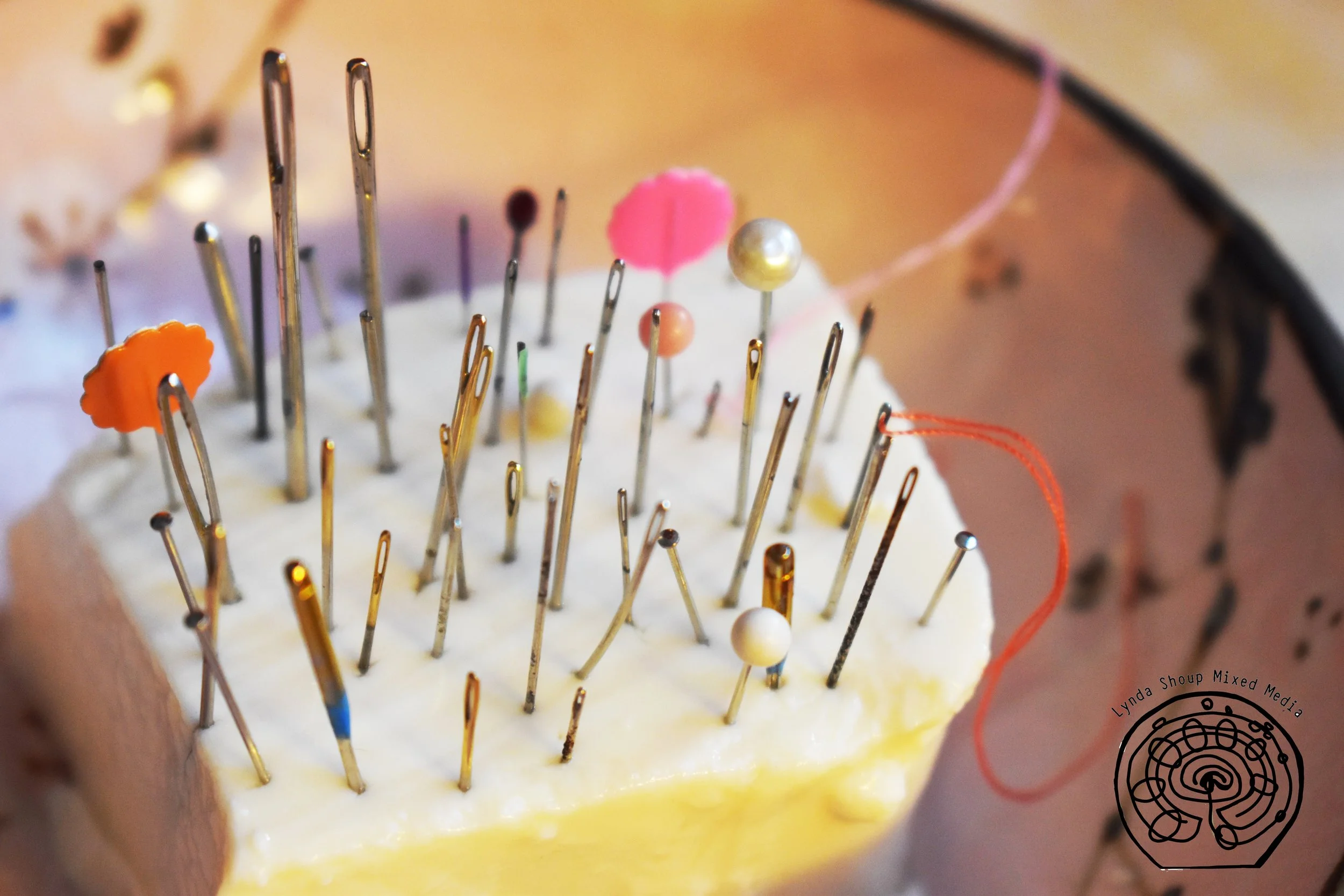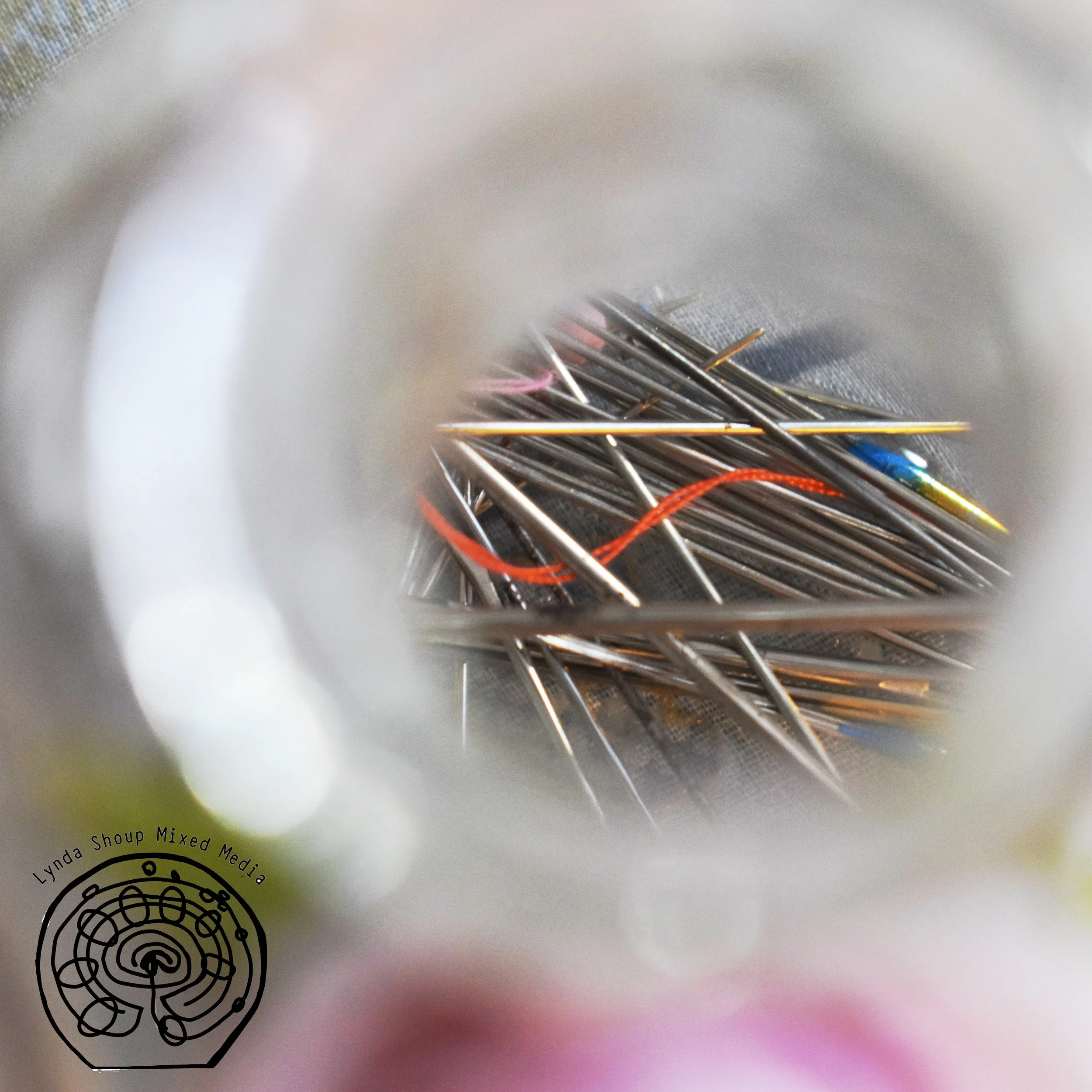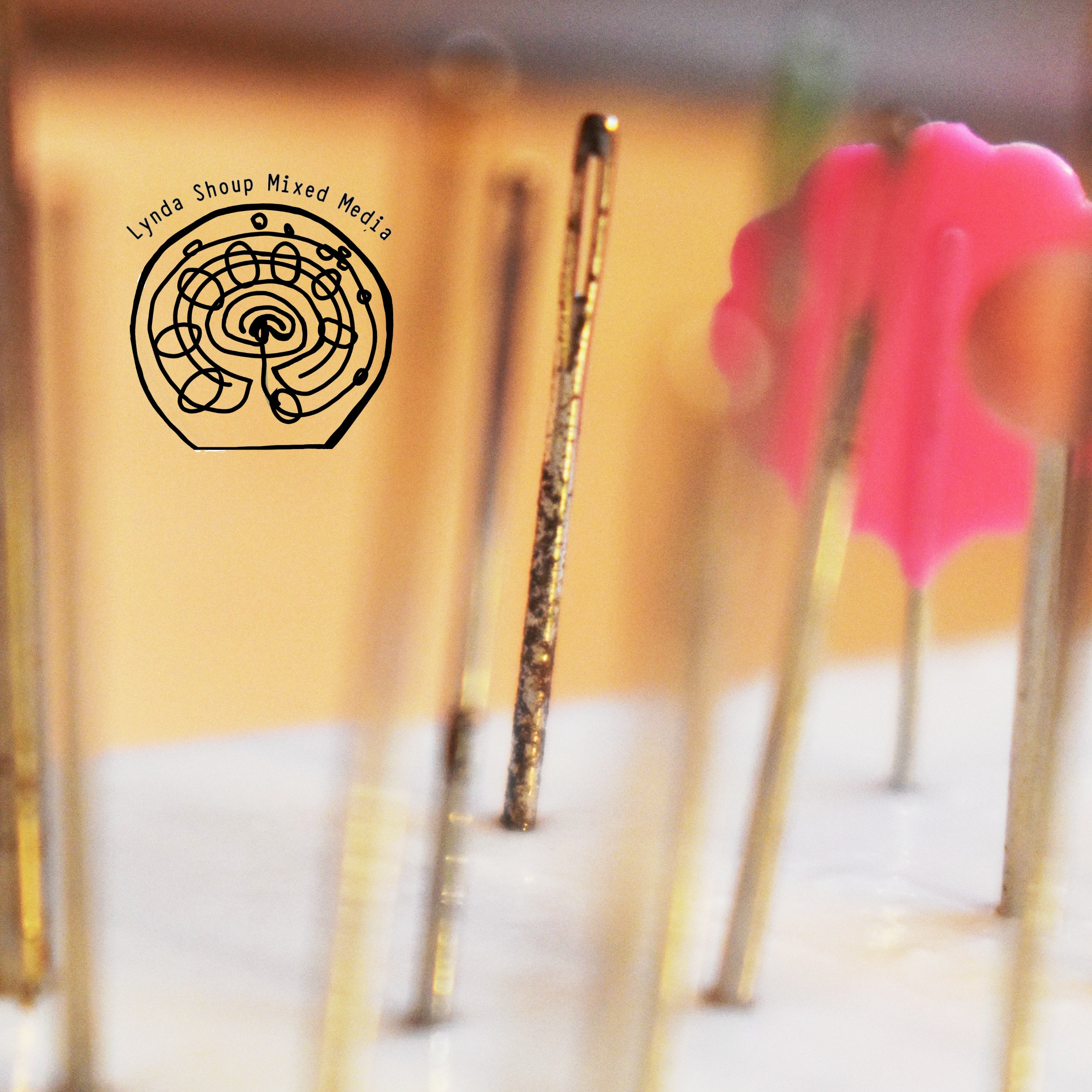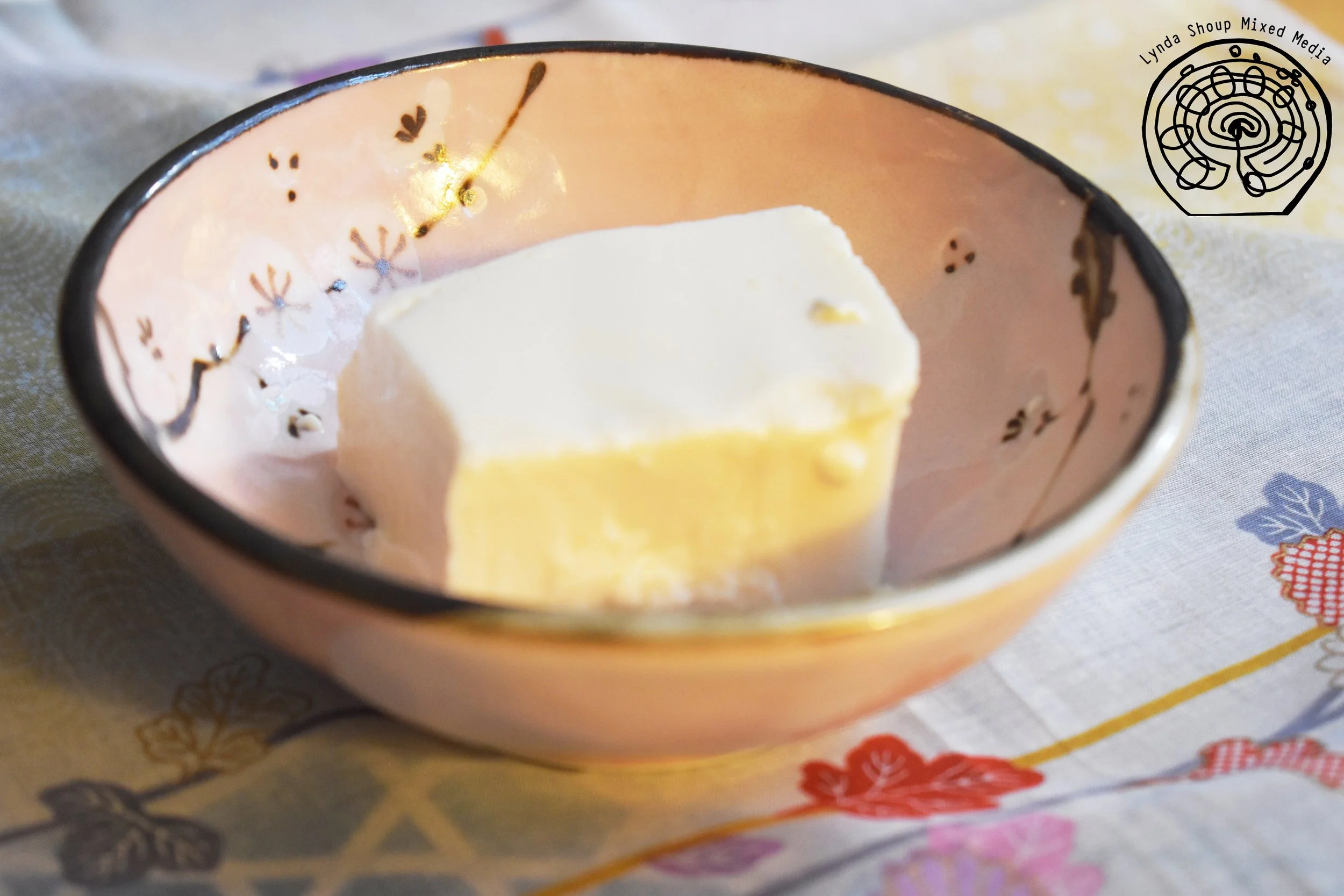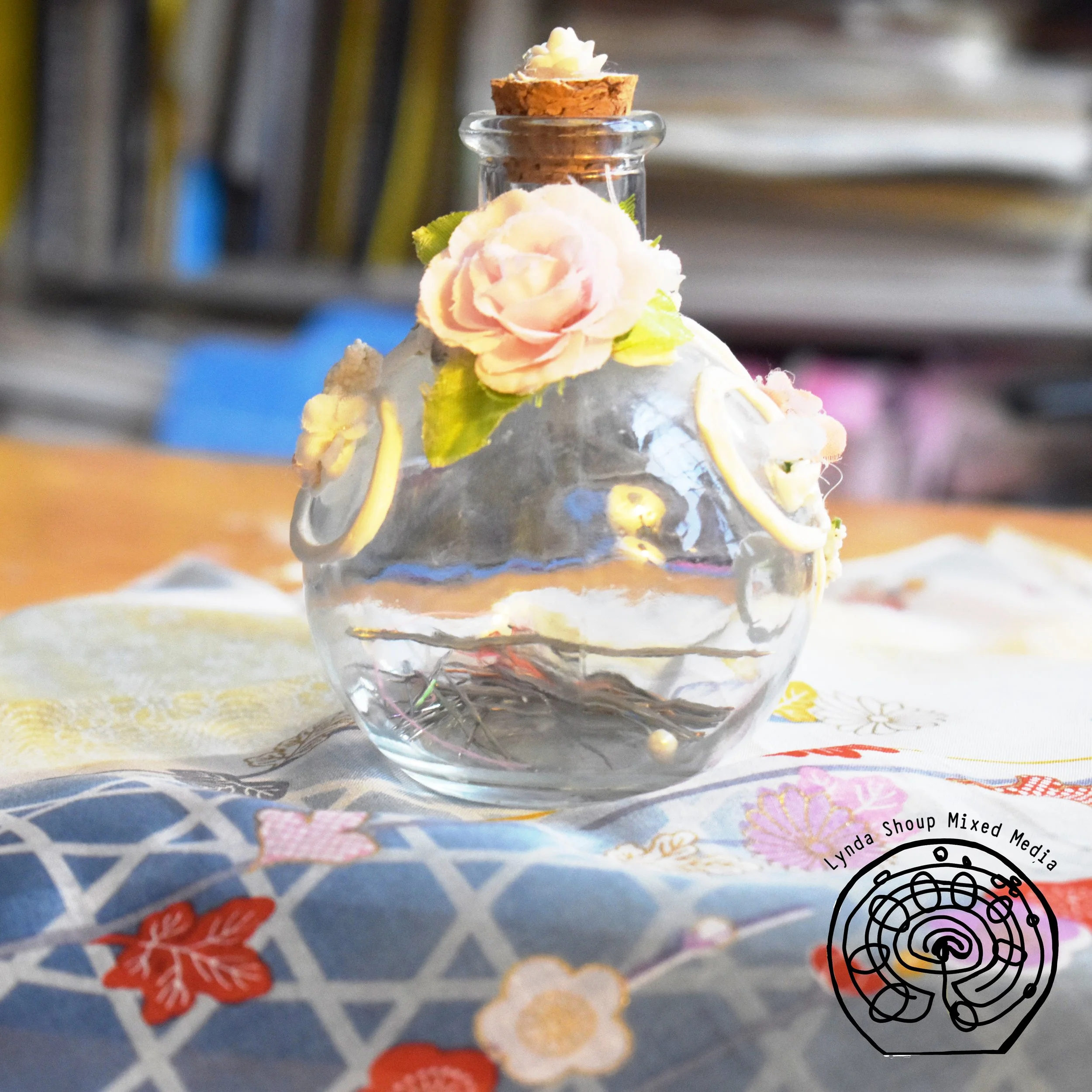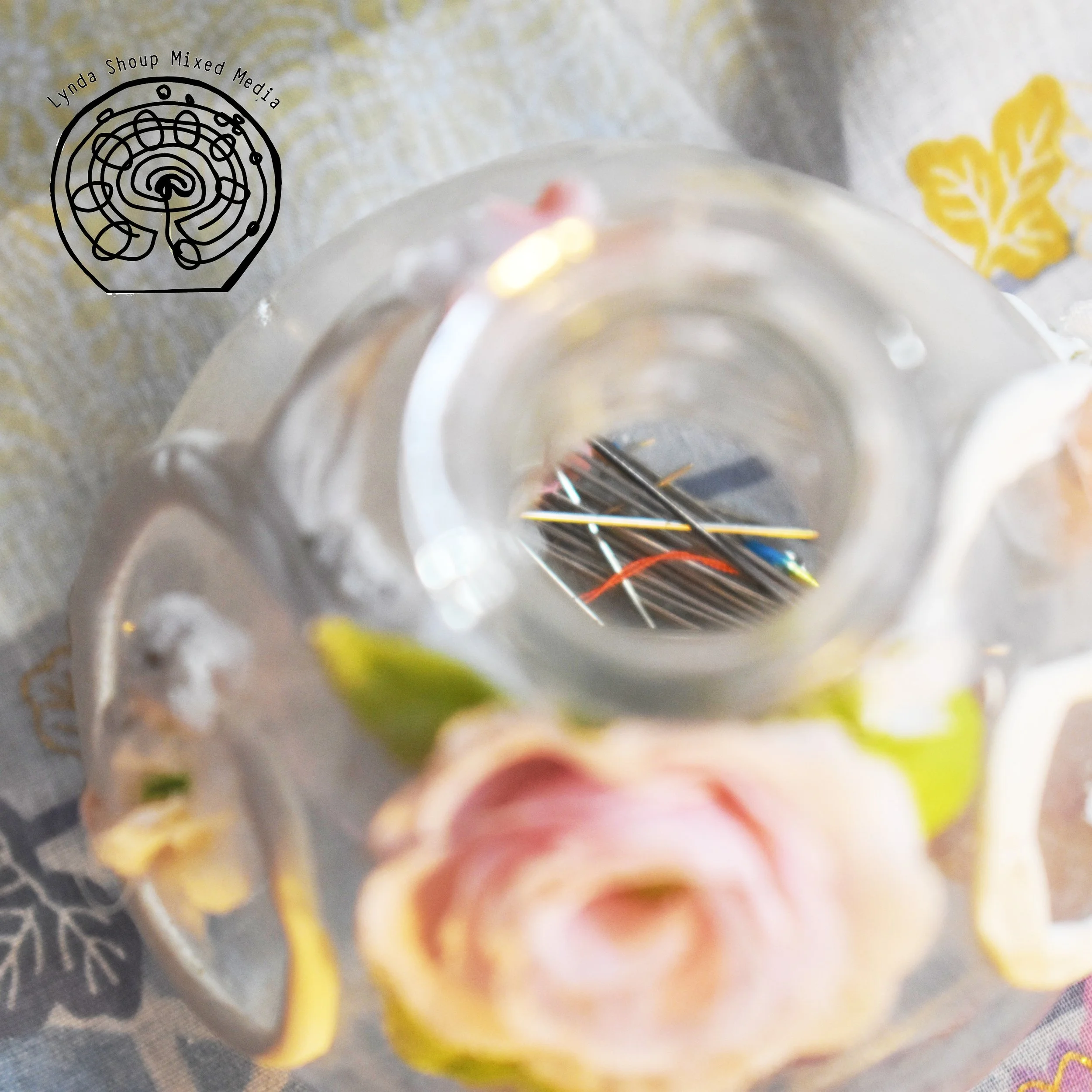Harikuyo _ Memorial Service for Broken Needles
Years ago when I first lived in Japan I visited Asakusa every weekend. There I had a kimono custom made, studied Nihon Buyou (Japanese Dance) and got to know the vendors on the shopping street that lined the path to Tokyo's oldest Buddhist Temple, Sensoji. The area felt very familiar and comfortable to me at the time. Each week I seemed to find a new shop, discover an alley full of wonderous things, or taste a new delicacy. Once, after dance class, my friends and I were passing through an area of the temple grounds I had not seen before when my friend told me that the building we were passing was Awashima Shrine. She then added that it was the place that seamstresses took their worn out and broken needles to be blessed (and disposed of). It was a casual conversation which paled in memory as other things took precedent.
Fast forward to the time when I found out that instead of taking your needles any old time, there was a special day for this. The day is called Harikuyo which is celebrated on December 8th in and around Kyoto and February 8th elsewhere. Literally translated Harikuyo means "needle memorial service."
For western people, this might seem strange. Yet in Japan, animism is an accepted way of viewing the world. Physical objects are viewed as having spirit and must be given due diligence. Gratitude for the help that things give us and responsibility to the things we own is ingrained into the fabric of society, if not a view acted on by everyone. In addition, there is a concept that these items can turn into bad spirits if not put to rest properly and come to haunt a person.
Harikuyo began as a ceremony for kimono makers who made their living from sewing clothes for others. It has expanded to anyone who sews. Over the course of the year sewists of every stripe store their worn out and broken needles and pins. On the appointed day they bring them to the temple to be laid to rest. The aspects of this ceremony include:
Making sure the needles have a soft, comfortable resting place. This translates to the temples providing large platters of soft tofu (or alternatively konnyaku jelly) for the celebrants to insert needles in.
Individual celebrants offer prayers to needles thanking them for their service and asking for a restful retirement.
Prayers of individuals for the improvement of their sewing skills.
Incense lit outside the temple or shrine by the participants. Incense lit inside by priests.
Ceremony held by temple officials including prayers over the assembled needles.
An interesting idea that I have come across repeatedly is that as women stitch their kimonos they harbor certain sorrows in their hearts which become embedded in the needles. The ceremony is said to purify the needles of these secret sorrows before they are laid to rest.
Though I have never attended an actual harikuyo ceremony, the ideas I have learned in researching the ceremony sit well with me. So I have repurposed a beautiful bottle my daughter decorated to hold the needles which have rusted or broken this year.
I will honor them in a fashion as close to the original as possible. Needles cannot be burned, as many ceremonial services end. I have read that they are often buried in the ground or wrapped in fabric (still in the tofu) and floated down a river. As I don't think my town would like me to send a battalion of needles stuck in a piece of tofu down river. The water fowl would be especially unhappy with this arrangement. So the jury is out on how I will allow the needles to find peace in their retirement.
What I do know is that these acts of honoring the small things, the simple things that make up our daily world, is game-changing. As a sewist, this ceremony resonates with me.
What do you think?
(Note: Harikuyo is observed on February 8th in Tokyo and the Kanto region and December 8th In Kyoto and the Kansai region.)

